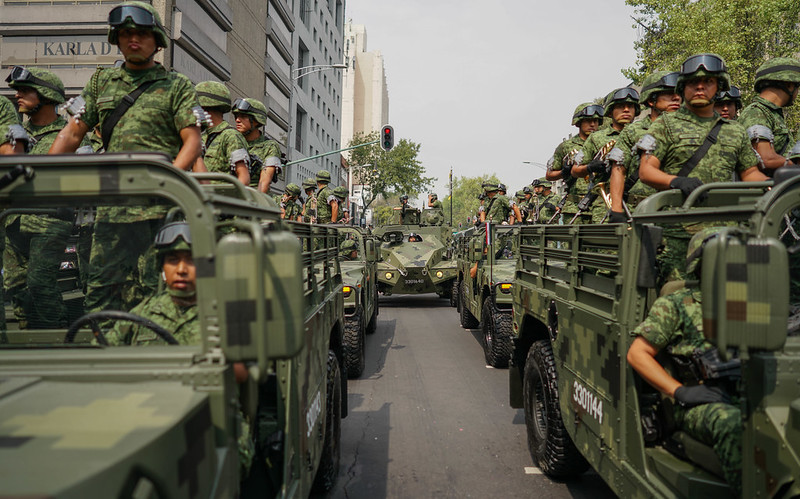Violence and crime are not products of chance, but rather the result of various factors that promote it. In the case of Mexico, we can analyze how many of these explanatory elements interact in current times and contribute to the overall problem.
2007: The Breaking Point
Over time, Mexican security policies have begun focusing their agenda on the fight against drugs and organized crime.
In the 2006 presidential elections, right-wing candidate Felipe Calderón claimed to prioritize the economy and employment. But after coming to power, he made a discursive turn towards the threat of organized crime, directing many state efforts to the punitive field of the drug cycle: from its production, distribution, and consumption. For this security policy, Felipe Calderón used the army for internal security tasks, a situation he himself described as extraordinary but necessary.
The Mexican state’s frontal attacks on organized crime had several consequences. On the one hand, drug seizures increased, drug lords were arrested, and State presence in certain areas increased. However, there were also collateral effects, especially the sustained increase in intentional homicides throughout the country, largely due to the conflictive dynamics of territorial control between different cartels and, in general, to the environment of illegality (Figure 1).[1]

Rather than resolve issues of violence in Mexico, this security strategy, directly or indirectly, seemed to support dynamics of violence such as homicide. However, these trends continued during President Enrique Peña Nieto’s subsequent term (2012-2018).
During the 2018 presidential election, leftist presidential candidate Andrés López Obrador stated that such tactics were obsolete and that the militaristic model in the fight against drugs should be rethought. However, once he assumed the presidency, his administration not only continued the policy but even expanded on it by creating the militarized “National Guard” and making constitutional changes that would allow him to use the army for internal security until the end of his term.
Other Factors
Despite what has been mentioned so far, militarization and the war on drugs are not the only explanatory factors for the high levels of violence in the country, as it is of course multivariate. Two other fundamental factors include:
- Noncompliance with the rule of law.
The war on drugs approach has focused on war issues and has undermined the operational capabilities of civilian law enforcement agencies in Mexico. Here we affirm that without an enforceable and firm rule of law, the war on drugs will not have significant results since it encourages violence without attacking the criminal structures, corruption, and bribery involved in the whole process of drug trafficking.
- U.S.-Mexico cooperation
U.S. dollars fuel the big business of drug trafficking in Mexico, so it is considered a shared responsibility. Cooperation to reduce the levels of violence in Mexico has often not been well coordinated and at times has even been counterproductive, such as in the case of the “Fast and Furious” operation[2].
How to Solve the Problem
A change in the security paradigm is needed in favor of one that is more efficient and especially one that costs fewer Mexican lives. A serious and well-founded reflection is imperative to mitigate the causes that have fostered violence and empowered organized crime in Mexico, for which cooperation between government, civil society, academics, and actors interested in improving this fundamental aspect of Mexican society is important.
Main Image Source: “Ejercito Mexicano” by Thomas_H_foto – Creative Commons license (CC BY-ND 2.0).
[1] Retrieved from: https://www.inegi.org.mx/sistemas/olap/proyectos/bd/continuas/mortalidad/defuncioneshom.asp?s=est
[2] An operation through which the U.S. Bureau of Alcohol, Tobacco and Firearms (ATF) sent more than 2,500 weapons to Mexico as a strategy to detain organized crime operators. Ended in a failed trace, with no arrests for the plan and most likely with human casualties.

